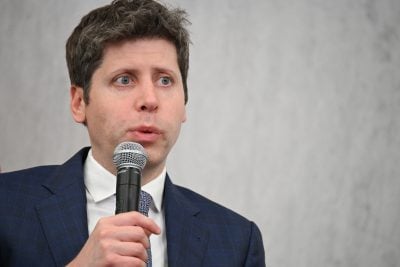Nigeria is celebrating the launch of a major new cultural attraction, as the John Randle Centre for Yoruba Culture and History opens its doors in the heart of Lagos.
The Centre takes its name from Dr John Randle, a Sierra Leone-born medical doctor, who bought land to build a swimming pool in the 1920s after the British colonial authorities refused to establish a site to teach Lagosians to swim. The venue served as a major recreational and cultural hub for decades, before eventually becoming derelict.
Almost a decade of redevelopment work, funded by the Lagos State government, is now nearing completion. As well as building a museum to tell the story of the Yoruba people, the scheme’s promoters have sought to use this oasis of greenery in the centre of the megacity as a place for enjoyment and relaxation. In tribute to John Randle’s legacy, his outdoor swimming pool has been restored, while an amphitheatre has been added as a space for artistic performances.
Incredibly, the Centre is the first major new museum to arrive in Lagos since 1957, when the Nigerian National Museum – which sits across the road – was opened. But, while Lagos may have been slow to build its offering of museums, its art and culture scene has been thriving for many years. Indeed, the cultural sector has grown to become an important part of the city’s economy, as well as enriching its society.
A story of continuity and change
Ahead of its official opening to the public, African Business was invited to take a tour of the John Randle Centre, which was designed by local architecture firm SI.SA. The building that houses the museum is conceived “as an extension of the landscape”, says Seun Oduwole, the project’s chief architect. The building appears to emerge out of the ground, with a sloping roof covered in grass rising gently upwards. Walking up the roof replicates how the Yoruba would take to higher ground to pray, Oduwole explains.
“We architects can get caught up in how amazing we are and end up with a very expressive building in the centre of a space,” he says wryly, “but we wanted to make sure all the buildings blended in and respected the landscape.”
Inside, visitors are taken on a journey through Yoruba history, beginning with an animation telling the story of the creation of the world at the instigation of the supreme god, Olodumare. From this “Big Bang” event, visitors meet 13 of the Orishas or òrìxà, the divine spirits of Yoruba mythology, before delving into the customs and practices of pre-colonial Yoruba life.
The representation of a Yoruba village includes a storytelling area, in which younger visitors can sit under a tree and listen to recorded stories that impart wisdom. “Storytelling is a very strong part of the culture,” he says. “We wanted to show that storytelling excellence.”
The journey continues through the great upheavals in the history of the Yoruba, from the arrival of the Europeans, the growth of Christian and Muslim influences, and resistance to colonisation. Slavery is deliberately kept at the margins, represented as a part of the Yoruba story, but not its dominant narrative. The diaspora features strongly, along with the Yoruba experience in independent Nigeria.
The Centre relies heavily on interactive exhibits. High-tech games and videos form an important part of the experience; children are given multiple opportunities to express their creativity. Eschewing the traditional “pottery in a glass cabinet” style of museum, Oduwole has sought to ensure the story of the Yoruba generates the excitement that it deserves.
As visitors tour the museum, the ceiling above them forms a pattern radiating outwards from a single point meant to represent the “Big Bang”. “This is a visual metaphor for Yoruba culture and identity going out and spreading around the world,” says Oduwole. The overall message is one of continuity alongside change; of how the Yoruba have faced many challenges over the centuries but succeeded in maintaining a unique and vibrant culture.
Golden age
After the Centre opens its doors it hopes to attract around two thousand visitors per week. There is no doubt that it will serve as a major cultural beacon for Lagos, playing a vital role in educating visitors from Nigeria and around the world on the rich heritage of the Yoruba.
The Centre is one of several exciting recent additions to the city’s cultural landscape. Across the water on Victoria Island, the Tiwani Contemporary gallery opened in February 2022, serving as an exhibition space for modern art from across Africa and the Global South.
Lagos boasts multiple other galleries, including the Nike Centre for Art and Culture – which, with around 8,000 artworks, is the largest venue of its kind in the region.
Meanwhile, the Art X Lagos event, launched in 2016, has grown into West Africa’s largest art fair, attracting thousands of visitors to the city each November.
The art scene in Lagos depends partly on the income the artists can generate from collectors. One such collector is Niyi Adenubi. Alongside his day job as a financier at investment management firm VFD Group, Adenubi has amassed a collection of over 200 pieces of African art.
He tells us that he had limited familiarity with African art until a “lightbulb moment” around 15 years ago, when he came to appreciate the role that artists played in independence movements across West Africa. He began to collect African art from the modernist era, before expanding his collection into contemporary art.
The last few years have brought a host of exciting developments in the Nigerian cultural scene, says Adenubi, including the opening of the “world class” John Randle Centre. “I think we’re into probably what is the golden age of African art in terms of recognition and positioning in the global art space,” he enthuses.
Adenubi does warn that continued success is not inevitable; other countries have seen their cultural vibrancy veer from progress into stagnation, he notes. “I feel like there needs to be deliberate efforts by all the stakeholders in terms of how that market is sustained, and how this golden age continues to be sustained.”
The government’s Ministry for Art, Culture and the Creative Economy, which has a mandate to grow the sector to $100bn by 2030, has an important role to play in laying the groundwork for continued growth, he says.
The creative industries are not, of course, immune from the broader economic difficulties facing Nigeria. The downturn in consumer purchasing power is a clear headwind for artists and musicians.
Even so, Adenubi is optimistic about the future. “The younger people are way more engaged culturally than the previous generations,” he says. “It’s not just visual arts – it’s the music, the comedies, the movies. I think all of what’s happening in that space has been very exciting for Nigeria in the last few years.”
“In the last four to five years, where the economy has been very hard for Nigeria, in the cultural space we’ve seen a lot of growth without any support from the government, just based on the sheer talent and determination of the people,” he says. “I believe that will continue to be the case.”
Want to continue reading? Subscribe today.
You've read all your free articles for this month! Subscribe now to enjoy full access to our content.
Digital Monthly
£8.00 / month
Receive full unlimited access to our articles, opinions, podcasts and more.
Digital Yearly
£70.00 / year
Our best value offer - save £26 and gain access to all of our digital content for an entire year!
 Sign in with Google
Sign in with Google 



